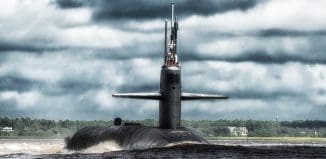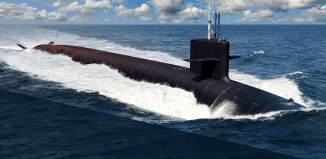“Chemical Monitoring” to unlock secrets of the Dimona nuclear reactor
This post is also available in:  עברית (Hebrew)
עברית (Hebrew)

By: Ami Dor On
After the Dimona reactor was established, David Ben-Gurion reported details of its capabilities to the Knesset, including its power which he rated at 24-26 megawatts. According to foreign sources today, it is claimed that the reactor’s power has reached 150 mega-watts. The Sunday Times has already reported that Mordechai Vanunu, a former employee at the reactor who was convicted in Israel of releasing secret information about the reactor, reported that the reactor produced about 40 kg of plutonium a year. According to experts about 10 kg of plutonium is required for the production of a single plutonium enabled atomic bomb.
One of the byproducts of plutonium production is Strontium 90 which is emitted from the chimney of the nuclear reactor and has characteristics similar to calcium, a chemical which is absorbed in the bones of animals and plants. The monitoring of this chemical and others and their circulation around the peripheral areas of the city of Dimona can provide a clear answer about the true power of the reactor, the nuclear materials it produces, as well as an ability to determine whether it can be used to make nuclear bombs.

Anyone traveling on the road to Dimona in the direction of the Dead Sea Works and the road to Eilat, can clearly see the ‘shell’ of one of the most open secrets in Israel, the Dimona nuclear reactor dome and a nearby narrow chimney with height of 20 m. Anyone who is familiar with the chemical processes that occur during the operation of the nuclear reactor is well aware that as a result of the reaction in the reactor’s core invisible materials are emitted from the chimney.
It has been argued that some of the secrets hidden beneath the surface of the NRC (Nuclear Research Center) were exposed by Mordechai Vanunu, an Israeli who was tried and convicted for treason in 1986. However essential questions remain such as: What is the power of the reactor and what exactly is produced there? or, Why is its existence still classified to this day under a heavy screen of ‘nuclear ambiguity? It seems that despite the cloak of secrecy, those who know the nature of the chemical activities of nuclear reactors and have examined the variety of publications available, official publications, semi-official publications and those publications defined under the heading of ‘foreign sources’ can figure things out.
Information about the activity of the reactor from its first days is provided by quite a few sites in the Internet world, one of them being an Israeli web-site called ‘Armageddon’ (1). This site claims Dimona is a ‘plutonium production reactor’. Their information offers the following picture: the knowledge and material for the construction of the reactor was provided by France as part of a secret agreement following the Suez War (1956). Construction work began in early 1958 and ended in 1962. The reactor started operating (turned “critical” in professional terms) in 1963, fueled with uranium, cooled by heavy water and power of 24-26 mega-watts. Since the large-scale construction on the site was impossible to hide it was decided by those in charge of the construction of the project, to inform the public that it was a textile factory named'”Dimona Textiles’. Later, when it could no longer be hidden that is was indeed a nuclear reactor, Israel’s then Prime Minister, David Ben-Gurion, was forced to provide an explanation to the public. The following is the statement that was issued by him in the Knesset on December 21, 1960:
“We see the development of the Negev as a main goal over the next decade and supported by multi-sided scientific research. For this purpose, we have established an Institute of Scientific Research in Beersheba in order to learn about the wilderness, flora and fauna of the desert. As such we are currently building a research thermal reactor with a power of 24,000 kilo-watts which will serve the needs of industry, agriculture, medicine and science, as well as for training scientists and Israelis in the technique necessary for building a nuclear power plant in the future, as we assume, in 10 to 15 years. The research reactor we are currently building in the Negev is intended solely for peaceful purposes, and was built under the management of Israeli experts. “
The Chemical process in the reactor was fueled by enriched uranium producing (as a byproduct) the radioactive element called plutonium, which is one of the two elements required to produce an atomic bomb. (2). According to foreign reports published by the British Sunday Times, the Israeli nuclear reactor produced about 40 kg of plutonium per year, information leaked to the world during the Vanunu spy affair,. This number was not necessarily accurate given the fact that uranium production depends on the power of the reactor. However, according to foreign reports, Israel has secretly increased the reactor’s power to 70 mega-watts and then to 150 mega-watts over the past years.
After French President, Charles de Gaulle ordered the imposition of an embargo (3) on Israel, it began to move its activities in the procurement of weapons and nuclear material detection to the United States The outcome was inevitable and with its curiosity having been aroused, American intelligence sought information and the U.S. sent observers to Israel in the 60s. Heavy diplomatic pressure was put on Israel stemming all the way to the presidential level, in an attempt to curb Israel’s plans and to deny her the knowledge and ability to produce nuclear weapons.
The irony is that despite all the intelligence and diplomatic exercises which countries in the world had invested in, especially the United States, the great efforts to uncover the secrets of Israel’s nuclear program, were almost unnecessary in the end. As far as is now known, the international inspectors apparently did not use the procedures that could have ascertained this information earlier through ‘chemical monitoring ‘. All they needed to detect was just one element, strontium 90, which is emitted from the chimneys of all the world’s reactors, and which is based on the controlled fission of Uranium. Ironically even President John F. Kennedy knew back in the early 60’s of the significance in the presence of strontium 90 in the bones of animals (4), but for reasons which are not clear; it seems the American government had no intention of dedicating great effort and many resources in order to expose the truth.
To understand what operational conclusions can be reached when locating the presence of strontium 90 in flora or fauna of any reactor environment, including the Dimona reactor, it is best to explain what in fact is this unique material.

Strontium is a chemical element found in nature in the form of yellowish mineral compounds. It is similar in its chemical properties to calcium and like calcium has the ability to be absorbed into the human body’s bones and plants. The element strontium is not radioactive, but it turns radioactive when Strontium 90 is produced during the chemical process that occurs at a nuclear energy producer, along with other substances emitted into the air through the chimney of the reactor. Because strontium is a heavy metallic element – heavier than the air, it floats in the air after exiting the chimney and slowly sinks to the ground where it is absorbed in the bones of animals and plants, just like calcium. This process is well known to Chemical scientists who know that an appropriate testing of animal bones as well as plants that have absorbed strontium 90 can reveal exactly how much radioactivity is inherent in the bone and as a result can also determine the production capacity of the reactor as well as its power output.
The half-life of strontium 90 reaches 18 years on average, compared with three times larger duration by plutonium 238 produced in uranium operated nuclear reactors. For this reason it is clear that you can track the existence of the material for years after it was formed. Strontium 90 also exists in solid nuclear waste formed by reactors and is considered the most dangerous material in its radioactive form. Strontium 90 also exists in the fallout following a nuclear explosion. Through the measurement of quantities and comparing the results to data published in the world regarding plutonium and strontium 90 elements produced in nuclear reactors as well as other materials, the secrets of the Dimona reactor can be deciphered.
If the U.S. had wanted to find out about the roadmap of the nuclear reactor in Dimona all it had to do was send research teams to Dimona’s geographic area, measure the winds in the reactor’s vicinity, collect plants, animals and animal remains, and check for the basic content of strontium 90. Findings from these efforts could have, and still can, provide a clear answer about the power capacity of the reactor, which nuclear materials it produces, and whether it can make atomic bombs of any kind.
Using common sense, it is likely that over the years, had U.S. envoys in the Middle East curiously monitored the ‘chemical monitoring’ path around the Dimona reactor, the conclusions would have been clear regarding what is called ‘Israel’s nuclear option’.
Who can assure us that those events didn’t occur?
1) All information about ‘Armageddon’ was collected from open sources and published in newspapers and on Internet sites in Israel and abroad.
2) Both U.S. atomic bombs dropped on Japan almost 70 years ago were made on the basis of the fission of these two elements – enriched uranium (Hiroshima bomb) and plutonium (Nagasaki bomb). Approximately 8-10 kilograms of plutonium is required to manufacture a nuclear bomb.
3) The embargo (ban) on arms exports from France to Israel was imposed shortly before the Six Day War and resulted in the end to the era of security cooperation between Israel and France.
4) Strontium 90 penetrates into a living organism (human or plant) mainly through the foods that it consumes. 70-80% of strontium reaching the living body is absorbed in the bones and one percent is absorbed in the blood and soft tissues. The presence of strontium 90 in living body can be examined by biopsy and / or urine test. These facts were revealed by an American scientific team of researchers led by Dr. Lewis Reiss, while examining teeth that had fallen from the mouths of young children and found that the teeth of children born in 1963 contained remnants of strontium 90, 50 times greater than the amount found in children born in 1950. The oddity was due, as it turned out, to the increase in the number of nuclear tests conducted in the U.S. Because of the importance of this information to public health research, the results were presented to President John Kennedy. The result caused Kennedy to formulate in cooperation with Britain and the Soviet Union, a Convention to significantly reduce the number of nuclear tests.





























